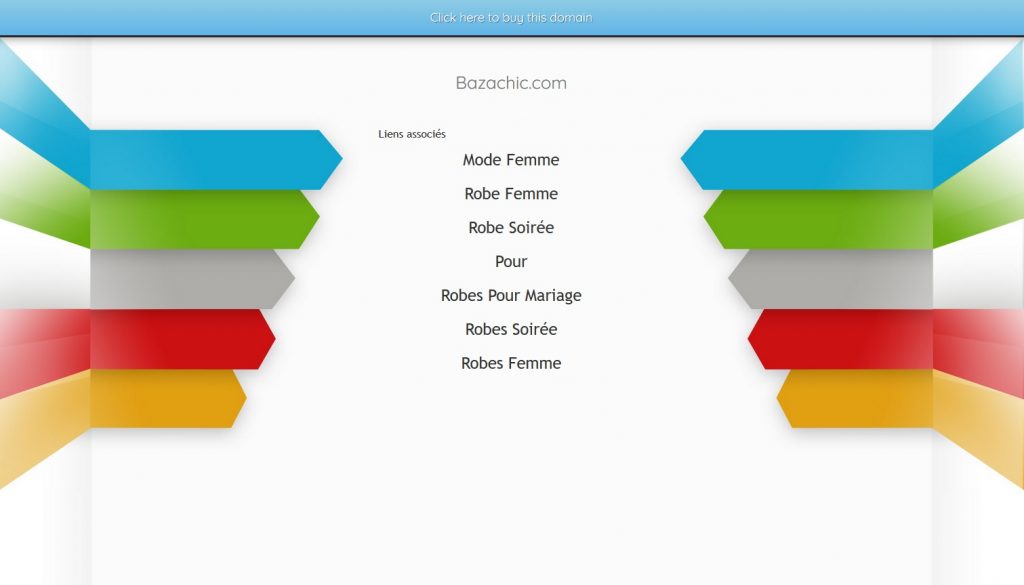Damages
Cybersquatting is the abusive registration of a domain name corresponding to a prior right, in order to use it maliciously.
If you have a brand name registered withINPI (Institut national de la propriété industrielle), you are the owner of the brand. As a result, you are able to take action against domain name cybersquatting.
Thanks to your trade name or corporate name (i.e. the name of the company) or your patronymic, you have a prior right. As a result, you are eligible to take action against domain name cybersquatting.
Reserve a domain name corresponding to a trademark
Acquiring a domain name is simple.
Domain names are registered with accredited registrars (e.g. Gandi, LWS, Nordnet, Solidnames or Viaduc). The registrar is accredited by a registry, such asAFNIC for .FR. Generic or geographic extensions are assigned to registries by ICANN.
When you go to check the availability of a domain name, the registrar performs a purely technical domain name search. Either the domain name is already registered, or it is available.
However, a technically free domain name may correspond to a registered trademark. Buying an available domain name corresponding to an existing name may therefore infringe trademark law.
Register a domain name to sell it back to the brand at a higher price
In the past, domain name cybersquatting has been analyzed as a necessary evil associated with the web, in other words, an epiphenomenon.
The first cases of cybersquatting were speculative domain name registrations. Domain names are registered with a view to monetizing them, in fraud of the rights of the holders of often well-known trademarks.
For this reason, the cybersquatter tries to sell the domain name back to the trademark owner. What’s more, he installs it on a parking page displaying advertising links relating to the trademark, i.e. parasitism.

This speculative cybersquatting continues in spite of everything.
On the other hand, disputed domain names are now being used to cause damage on the Internet.
Domain names squatted to commit cybercrime
The cybersquatting of domain names is now a major vector for fraud.
For example, the sale of counterfeit products is a malicious use that is on the rise.
Cybersquatted domain names are used for unfair competition and customer misappropriation.
A domain name can also point to another Internet address. In this case, it’s a redirect to another website. Redirects lose natural traffic to your website.
Domain names are also used to damage brands, by attacking their reputations.
Major frauds are perpetrated using squatted domain names. Identity theft, phishing, scams of all kinds… are all carried out using cybersquatted domains.
Monitor trademarks on the Internet to detect domain name cybersquatting
Brand Alert will find a domain name that includes your trademark. Take the case of Solidnames’ Brand Alert.
This watch detects new domain names registered with your name in all Internet extensions.
You’ll receive a full report on the potentially cybersquatted domain name at your e-mail address.
More specifically, the alert contains a screenshot of the website, the domain name’s “whois” and the host’s DNS servers. DNS records specific to e-mail addresses are also specified, as are the keywords appearing in the title of the web page.
Once a case of domain name cybersquatting has been detected, it needs to be monitored. SecURL” domain name monitoring allows you to monitor a specific URL on a daily basis.
For example, you’ll be alerted when a new site is created. You’ll also be notified of any web hosting changes with new IP addresses.
The whois of the domain name is also monitored. If the domain name is not renewed, you’ll be alerted via the expiration date watch.
Recovering a cybersquatted domain name
To recover a domain name, you can buy it back.
After reaching a financial agreement with the holder, you transfer the domain name using an authorization code.
Solidnames does not recommend buying back cybersquatted domain names. As soon as you pay a cybersquatter, you encourage him to continue registering several squatting domain names… since you’re paying him to do so.
To recover the domain name, legal proceedings are available.
The World Intellectual Property Organization(WIPO) has also set up an out-of-court procedure. This is commonly referred to as the Uniform Domain-Name Dispute-Resolution Policy (UDRP).
Several criteria must be met to win the UDRP extrajudicial procedure.
First and foremost, you must have trademark protection. The squatted domain name must create a risk of confusion with your trademark, for example if it is registered with hyphens.
The potential cybersquatter must have no legitimate interest in the domain name. Finally, the domain name must be used in bad faith.
If these criteria are met, the trademark obtains the transfer or cancellation of the squatted domain name. A favorable out-of-court decision does not entitle the claimant to damages.
In 2019, WIPO saw a new record number of domain name dispute complaints.
3,693 cases were handled compared with 3,447 in 2018, which was already a record year for domain name cybersquatting.
France is the second country in the world, after the United States, to attack the most against domain name cybersquatting.